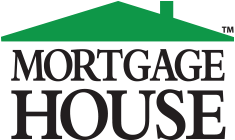Top 10 Investment Tips
1. Investing is a business transaction
Use your head and not your emotions when selecting a property. Ensure the investment property you want to purchase meets the criteria that potential renters are looking for and not necessarily your criteria for a home. Remember, you won’t be living there.
2. Be prepared to negotiate
And know how and what to negotiate on such as price, tenants, access to the site etc.
3. A good investment loan is just as important as a good investment property
You need both to be working for you in order to make the most of your investment. Features you may want to consider in an investment loan may include a line of credit facility, interest only repayments, capitalise interest option, split loan facility etc.
4. Get Legal advice
Ensure your contract is fully examined by a professional and the details are clearly explained to you. Your solicitor / conveyancer should be able to spot any issues with the contract which may affect the purchase.
5. Capital growth vs rental yield
Decide which is more important to you. Capital growth is the increase in the value of the property which inturn increases the equity you have in the property. Rental yield is the amount of income you can generate from the property. Capital growth will get you out of the market and rental yield keeps you in. You require a bit of both to gain the most out of your investment.
6. Get a good Professional Property Manager
For a small fee, you can reduce the headaches associated with an investment property. They take care of the tenant’s issues, have access to tradespeople, collect rent/chase arrears and are up to date with changes to the Residential Tenancies Act. This frees up your time so you can concentrate on growing your property portfolio.
7. Research the property and the area
Check the capital growth history of the area and the potential rental income of the property. Real estate agents may be able to assist with this. The area should be close to public transport, amenities such as schools, hospitals, parks shops etc.
8. Be wary of ‘special conditions’
On a property contract such as releasing the deposit before the settlement and penalty payments if you don’t settle on time.
9. Depreciation
This describes the general wear and tear of an asset that occurs over the period of time that you own it (also referred to as its ‘useful life’). There are two ways to calculate the deduction of for depreciating assets:
a. Prime Cost – this method depreciates the asset evenly over its useful life. To calculate the depreciation rate, you divide 100% by the asset’s useful life in years. Example if the asset has a useful life of 4 years, the depreciation rate is 25% (100% / 4).
b. Diminishing Value – this method assumes that an asset depreciates faster in the first years of its useful life. To calculate the depreciation rate, you divide 150% by the asset’s useful life in years. Example, if the asset has a useful life of 4 years, the depreciation rate is 37.5% (150% / 4).
Below is an example comparing the outcome of both methods using the scenario that the asset has a useful life of 4 years and is worth $1500:
| Prime Cost | Diminishing Value | |
| 100% / 4 = 25% | 150% / 4 = 37.5% | |
| Year 1 | $1,500 * 25% = $375 | $1,500 * 37.5% = $562 |
| Year 2 | $1,500 * 25% = $375 | ($1,500 – $562.50) * 37.5% = $352 |
| Year 3 | $1,500 * 25% = $375 | ($1,500 – ($562.50 + $351.56)) * 37.5% = $220 |
| Year 4 | $1,500 * 25% = $375 | $1,500 – ($562.50 +$ 351.56 + $219.92)) * 37.5% = $137 |
| Total Depreciation deduction after 4 years: | ||
| $1,870 | $1,271 | |
Using the diminishing value method, the asset still has some value after its useful life which you can depreciate further in the later years.
Despite these figures, the majority of investors still chose to use the Diminishing Value method, where they can access the higher deductions early on, reducing the risk of missing out on them if they decide to sell the property before reaping the full depreciation benefits.
10. Positive vs Negative gearing
Positive gearing refers to the income generated from the investment property being higher than the expenses incurred in owning it. Negative gearing is the reverse, where the cost of ownership is higher than the income generated.
| Positive Gearing | Negative Gearing | |
| Advantages: |
|
|
| Disadvantages: |
|
|
It is always best to speak to a financial advisor to seek an investment solution that suits your needs.
Need More Information: Call us on 133 144 or Enquire Online.
